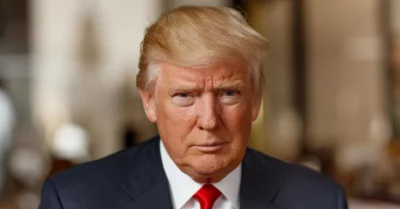SEATTLE, WA - Three men, who were extradited from Colombia following an undercover investigation led by the U.S. Drug Enforcement (DEA), were convicted of drug trafficking and money laundering charges in Seattle following a two week jury trial. The investigation involved a multi-ton cocaine drug trafficking conspiracy. The jury deliberated about one day before returning guilty verdicts on all charges May 3, 2011. Miguel Antonio Jimenez Torres, a/k/a “Miguel Angel Jimenez," 40, Hector Fabio Zapata Alvares, a/k/a “Hector Fabio Zapata," 30, and Nivaldo Riascos Renteria, 41, all citizens of Colombia, will be sentenced by U.S. District Judge James L. Robart on August 8, 2011.
According to the records filed in the case and testimony at trial, Miguel Jimenez acted as a transportation broker, assisting several different drug cartels with locating ships and planes to transport tons of cocaine from South America to Mexico, Africa and Europe. One of the drug trafficking organizations he conspired with was the Riascos Drug Trafficking (DTO). Testimony at trial revealed that the Riascos DTO had a contract to acquire 70 tons of cocaine from the paramilitary group known as FARC- the Revolutionary Armed Forces of Colombia, which is designated by the United States as a terrorist organization. The FARC controls cocaine production in South America, which is the only region in the world where cocaine is produced, and uses the proceeds of cocaine trafficking to finance their terrorist activity.
In 2007, an undercover DEA agent posed as a shipping executive with offices located in Seattle, Washington, Miami, Florida and Vancouver, Canada. Jimenez, Zapata, Riascos and others met with the DEA agent in Panama, Aruba and Ecuador to arrange the transport of ten tons of cocaine. Specifically, the defendants negotiated with the undercover agent to hide their cocaine in ballast tanks on the vessels, which are located underneath the vessel’s cargo tanks, and not readily accessible to law enforcement who may attempt to inspect the vessel’s cargo. The conspirators agreed to pay the undercover agent $350 per kilogram of cocaine that was transported, and then wired more than $491,000 from Mexico as a down payment for transporting 10 tons of cocaine from the coast of Ecuador to Mexico.
During the negotiations, members of the organization inspected additional vessels to transport a second ten-ton load of cocaine, which was to occur immediately after the completion of the first drug transportation contract. As part of the negotiations, the Riascos DTO provided the undercover agent nautical coordinates where the cocaine was to be transferred to their Mexican counterparts, off the coast of Mexico. These coordinates corresponded to a geographical area controlled by the Beltran-Leyva drug trafficking organization, which is known by Mexican law enforcement to distribute ton quantities of cocaine into the United States through the southwest border between Mexico and the United States.
In early 2008, the Colombian army raided a FARC campsite located in Ecuador, and the FARC leader Raul Reyes was killed. Testimony at trial revealed that the Riascos DTO had members at the FARC campsite days before the raid. The Riascos DTO told the undercover agent that as a result of this military incursion, the transportation of cocaine would be postponed. The United States government then proceeded with seeking the extradition of the five individuals charged in the conspiracy to import and distribute cocaine.
Two of the five people indicted in the cocaine trafficking conspiracy were killed prior to the arrest of the defendants in Colombia. Jimenez, Zapata, and Riascos were taken into custody in Colombia in February 2009, and were extradited to the U.S. in 2010 and early 2011.
Riascos and Zapata were convicted of conspiracy to import cocaine and conspiracy to distribute cocaine. Riascos has a prior drug trafficking conviction from the Eastern District of New York, so he faces a mandatory minimum 20 years to life in prison. Zapata faces a mandatory minimum of ten years to life in prison.
Jimenez was convicted of conspiracy to import cocaine, conspiracy to distribute cocaine, and conspiracy to engage in money laundering and 16 counts of money laundering. Jimenez faces ten years to life in prison when sentenced.
The investigation was led by the Drug Enforcement Administration, and was financed fully by the money the drug cartel sent to the U.S. as a down payment for the shipping. This was an Organized Crime and Drug Enforcement Task (OCDETF) investigation, providing supplemental federal funding to the federal and state agencies involved.




